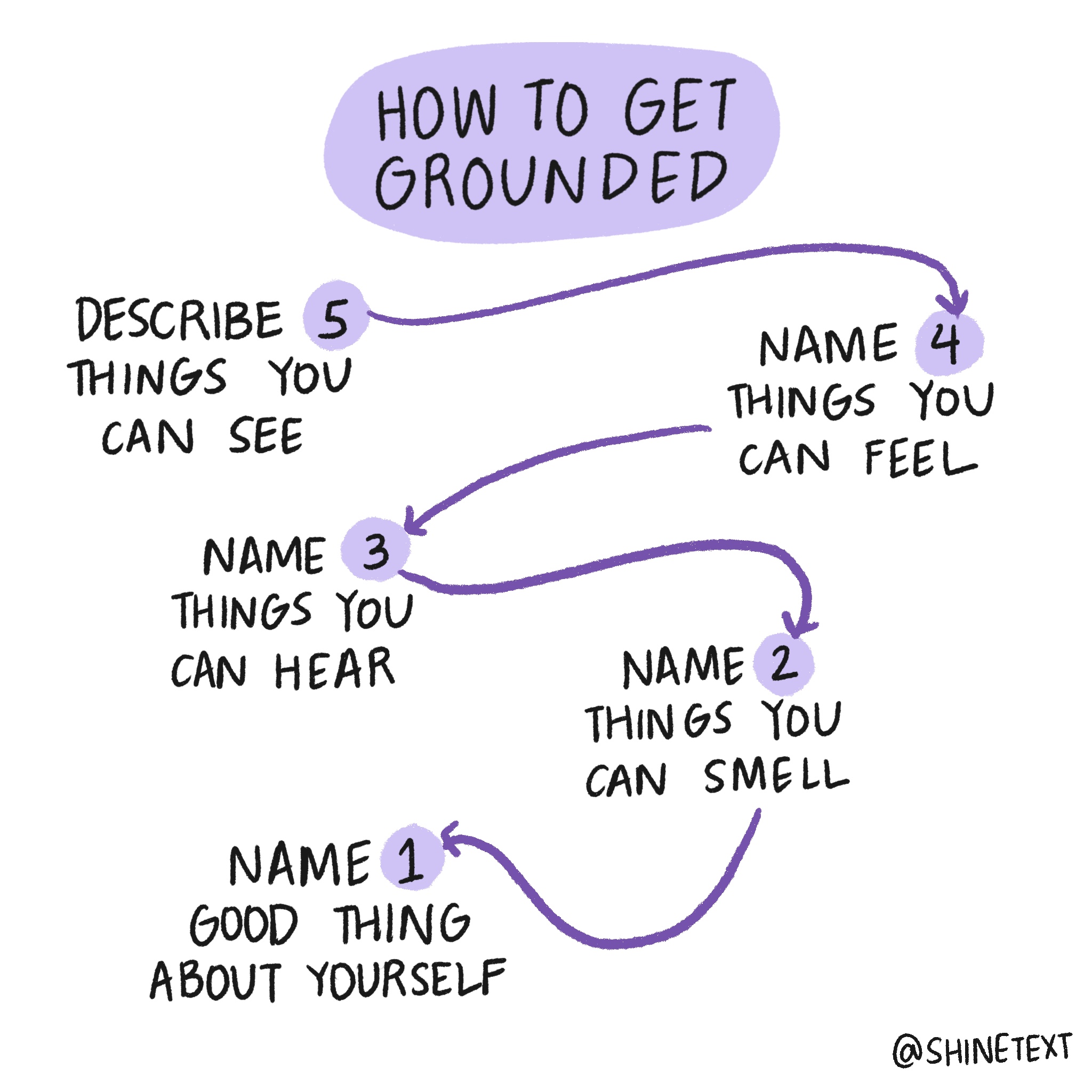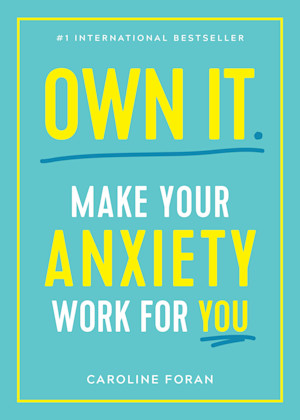The Next Time Your Anxiety Hits: Try This 5-4-3-2-1 Exercise
A version of this excerpt originally appeared in Own It: Make Your Anxiety Work for You by Caroline Foran.
Let’s be honest: Our brains have a tendency of working in really strange ways.
A lot of our feelings—like stress, joy, contentedness—all have roots in our thoughts. But sometimes those thoughts can lead to “mind traps,” often referred to as “cognitive distortions.”
The one I’m most guilty of is catastrophizing. It’s a distorted type of thinking that really amplifies anxiety. It’s when we jump to the worst possible conclusion, expecting disaster, or we see something as being far worse than it actually is.
Sound familiar?
Our minds sometimes play the what-if game—and that’s just one of the many types of thinking that can cause you to fall into a mind trap.
Others include:
Polarized thinking
Polarized thinking happens when you believe that there are only right or wrong outcomes or views. When you view things in terms of pure good or pure bad, it leads to unachievable standards and high stress levels.
Filtering
Filtering is taking the negative details and magnifying them while filtering out all the positive aspects of a situation. For example: A person may pick out a single, unpleasant detail and dwell on it exclusively so that their vision of reality becomes darkened or distorted.
Personalization
This is thinking that everything people do or say is some kind of reaction to you specifically. For example: I’ve done this so many times—thinking that a friend’s bad mood is because I’ve done something to irritate them, and so I search my mind for reasons to blame myself. The underlying assumption is that your worth is in question.
Overgeneralizations
Overgeneralization is coming to a general conclusion based on a single incident or piece of evidence. If something bad happens once, we expect it to happen over and over again. Using “always” and “never” are clues that this style of thinking is at work.
Understanding the different kinds of thoughts that cause anxiety is the first step to conquering a mind trap.
Understanding the different kinds of thoughts that cause anxiety is the first step to conquering a mind trap.
When you’re in a worry spiral thanks to overgeneralization, or beating yourself up because of personalizing your thoughts, getting grounded is a technique that can help, too.
The Power of Grounding
Grounding is a technique that helps us to reorient to the here and now, bringing us into the present. It is useful during a panic attack or if you're feeling disassociated from your environment.
There are many different exercises you can practice to ease your way out of a mind trap, but one quick method to help you get grounded in the face of catastrophizing or filtering is the 5-4-3-2-1 exercise.
Grounding is a technique that helps us to reorient to the here and now, bringing us into the present.
Here’s how to do it:
1. Describe 5 things you can see
Whether it’s the chair you may be sitting on or the ground beneath you, take time to hone in on five different objects that are in your presence. Note the way they look, how far away from you they are, and their various colors.
2. Name 4 things you can feel
Even when you think you might not be feeling much, you are! Name four things—like the clothes you’re wearing, your feet on the ground, or the air on your skin. Sit in those feelings for a moment and try to find unexpected ones.
3. Name 3 things you hear
Noises are all around us and focusing on three things you can currently hear (The whir of a computer? Traffic outside?) can help you get grounded in the present moment.
4. Name 2 things you can smell (or two smells you like)
Is a candle lit near you? Are you standing next to food—or trash?
Take a moment to find two smells and hone in on them for as long as you can muster. If you have a stuffy nose, maybe imagining some smells might work too!
5. Name 1 good thing about yourself
You are worthy of all the praise in the world, but for now, focusing on one good thing will do the trick.
Whether it’s a recent accomplishment or the way you are absolutely rocking those socks, find one thing to give yourself a pat on the back.
Whether you find yourself catastrophizing or filtering thoughts, you can repeat this exercise as many times as you may need to, starting with describing five things you see and working your way down to naming one good thing about you.
Savor that last one, too—you are more than those thoughts that are floating around.
Read Next: Ask Yourself These 20 Questions to Improve Your Self-Awareness

Shine is supported by members like you. When you buy through links on our site, we may earn an affiliate commission. See our affiliate disclosure for more info.



